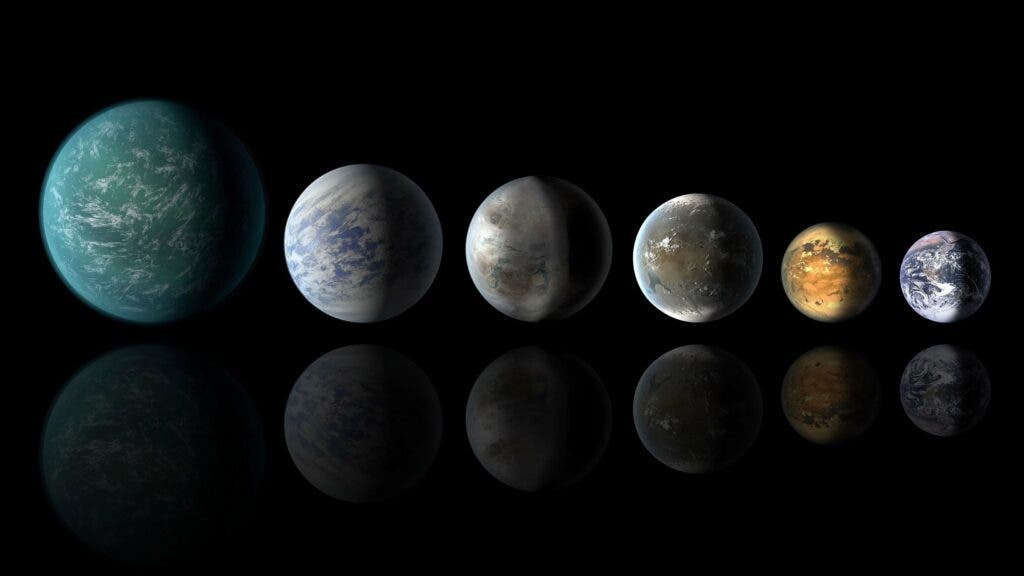Water is abundantly present on many small extrasolar planets but does not flow in oceans and rivers as on Earth. Instead, it’s probably embedded in rock or in pockets beneath the surface, according to a new study by US and Spanish researchers. This suggests that more planets could have large quantities of water than first thought — which means there could be even more habitable worlds than we expected.

“It was a surprise to see evidence for so many water worlds orbiting the most common type of star in the galaxy,” Rafael Luque, first author of the new paper and a postdoctoral researcher at the University of Chicago, said in a statement. For Luque, their finding will have “enormous consequences” for the search for habitable planets.
Luque and his co-author Enric Pallé of the Institute of Astrophysics of the Canary Islands analyzed the radius and mass of 43 known small exoplanets around a type of star called M-dwarf. These are the most common stars in the Milky Way, and scientists have cataloged dozens of planets so far around them in recent years.
However, stars are much brighter than their planets, which means we can’t see the actual planets themselves (or we only do in exceptional cases). Instead, scientists usually detect signs of the planet’s effects on their stars — the shadow a planet creates when crossing in front of a star or a small gravitational wobble. This means that scientists don’t really know in abundant detail yet what these planets look like.
A surprising finding
Scientists have used this information to compare alien worlds with the planets in our solar system as a way of guessing what they might look like. A planet that has the same radius as Earth is believed to be very rock, for example. These analyses have been performed for individual planets but rarely for all the planets on the Milky Way. When researchers looked at the entire galaxies, the figures came as a bit of a shock.
As Luque and Palle looked at the planets, they came across a surprising finding. The densities of a big group suggested that they were too light for their size to be made up of pure rock. Instead, they were probably something half rock and half water. It’s like lifting a bowling and a soccer ball: roughly the same size, but one is much heavier.
While it might be tempting to imagine the planets covered in deep oceans, the reality is far from that. They are so close to the sun that any water on the surface would have to exist in a supercritical gaseous phase, enlarging their radius. “We don’t see these in the samples. This suggests the water isn’t in the form of a surface ocean,” Luque said.
Instead, the researchers believe that the water could exist mixed into the rock or in the pockets below the surface. This is similar to the conditions in Jupiter’s moon Europa, which is believed to have liquid water underground. The finding matches a previous theory that suggested planets form away in their solar system and later migrate inward.
While the evidence is persuasive, exoplanet scientist Jacob Beam, whose group Luque joined to do further analyses, said he would like to see the “smoking gun proof” that one of these planets is a water world. This is what the scientists are hoping to prove with James Webb Telescope, NASA’s recently launched space telescope that is the successor to Hubble.
The study was published in the journal Science.






